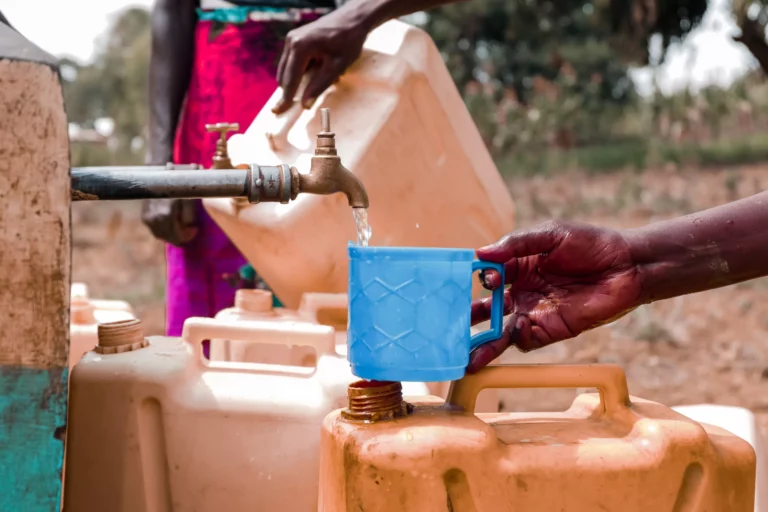Filtration and Purification: Clean Water Solutions
A database with an ever-growing number of clean water solutions to search from.

Waterborne Contaminants: A Health Crisis
Water filters and chemical purifiers are used to mitigate the danger that is posed by contaminants in freshwater sources. These contaminants present a problem of water accessibility for many. They include things like PFAS chemicals, heavy metals, human waste, and microorganisms like bacteria and viruses. Anything that poses a risk to human health can be classified as a contaminant and cause water to be inaccessible.
The consequences of consuming contaminated water are great for many. An estimated 3.4 million people die each year from waterborne illnesses. Drinking contaminated water is the leading cause of death globally. Although unclean water is by far the greatest threat to public health, but water purification and water filtration solutions can help.
How Can Water Technologies Help?



What’s the Difference Between Water Purification and Filtration?
Water purification and water filtration are often used interchangeably but their differences are important. Water purification refers to the overall chemical treatment process that is designed to remove or eliminate impurities and other harmful substances in water. This can be bacteria, viruses, parasites, protozoa, or heavy metals and other chemicals. Purification options often don’t eliminate larger particles of sediment like dirt and sand.
Water filtration works to eliminate those same contaminants by using physical rather than chemical processes. Instead of neutralizing chemicals or microorganisms, a filter relies on barriers and porous materials that can trap contaminants that are suspended in water. They are most commonly used to remove larger particles like sediment, parasites, and bacteria by preventing them from passing through these physical barriers.
Many, but not all, filters are less effective against viruses because of the size of these kinds of contaminants. Common filter mediums are activated carbon, sand, or ceramic membranes which work to improve water quality, clarity, and reduce turbidity.
Why Create a Water Solutions Database?
The global water crisis affects communities all around the world. It affects both rural and urban populations, the Global South and the Global North, and it does not discriminate. To combat this crisis, international cooperation is required on an almost unprecedented scale. For the future of clean water, and for all global citizens, we created a solutions database.


The Scope of the World Water Crisis
Only 3% of the world’s water is freshwater, and of that, much of it remains unfit for human consumption. Though biological contaminants such as parasites, bacteria, protozoa, and viruses have long posed risks to human health, as we interact more with our environment, the human impact on our freshwater sources becomes clear.
As we expand industry and our numbers grow, we have a larger footprint as a global population. The consequences of these trends directly affect our natural resources like water. Industrial waste, agricultural runoff, and oil leaks and spills all threaten the drinking water of communities all around the world, and present an imminent threat to human health. Poor septic management can lead to human waste contaminating local water sources, cause disease, and at times even death.
Oftentimes, environmental regulation and infrastructure simply are not strong or expansive enough to contend with these issues at their source, and reversing the process of freshwater contamination is not easy. This is why we lean heavily on expanding access to clean water through innovative technologies like chemical water purification and water filtration devices.
Availability and Accessibility
Globally, 2 billion people lack access to clean water. But, what do we mean when we use those words like access and accessibility? It’s important to understand the issue of availability versus accessibility in the realm of water. Though water scarcity is an issue around the world, and climate change has intensified the severity of droughts, water scarcity is not the only issue.
Water may not be accessible due to a variety of social, economic, or environmental factors. The privatization of water sources that put accessing water above the financial capabilities of communities is an example of how water can be available without being accessible.


The Future of Clean Water Solutions
The Solutions database is an ever-expanding tool for all clean water solutions. With treatments like water filtration and purification options included now, you will soon be able to filter through water storage, water testing kit, water sourcing information and more. We anticipate an ever-growing Solutions Database far beyond water filtration and water purification technologies.
GET STARTED

The Organizations Database
Explore the Clean Water Organizations Database to find others working to end the world water crisis. Expand your network, connect with potential partners, and collaborate on projects together.
EXPLORE PRODUCTS

The Knowledge Hub
Use the database of resources collected to learn more about the global water crisis and its interconnected issues from water scarcity to pollution. Access the Knowledge Hub, a continuously evolving digital library, to gain insights, solutions, and deepen your understanding. Start your journey in the world of water and fight global water insecurity today.
EXPLORE RESOURCES

The Consultation Tool
Discover everything certified WASH experts have to offer. Search for a consultant for your next clean water project and utilize their industry experience and expertise. Plus, enjoy your first 15 minutes free!